Fatigue Testing
Fatigue testing measures the response of materials to repetitive loading. All equipment will experience mechanical, thermal, and environmental load repetitively during service, which will lead to failure of the components. These components may be metallic, polymeric, ceramic, and / or composite. Failures, when components experience repetitive loading, are called fatigue failures. Fatigue failures generally occur even when the loading levels are much less than static failure limits. Thus, it is necessary to understand failure limits under repetitive loading condition of material. In addition, many structures are made by joining several components by welding or other joining methods. It will be necessary to understand the failure of structures under repetitive loading conditions which may or may not happen in the component material; but at a joint.
Types of Fatigue Testing
Fatigue testing is generally classified according to the loading type. Some of the well-known loading conditions are
- Axial or Push Pull Loading
- Bending or Flexural Loading
- Twist or Torsional Loading
- Rotating Bending Loading
- Thermal Fatigue Loading
- Corrosion Fatigue Loading
- Combination of the Above
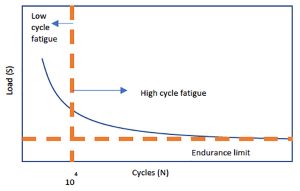
These tests are further sub divided into sub classes. For example, axial or loading can be further divided in to tension – tension or tension- compression. In addition to the mode of loading, a fatigue test will have other control parameters like shape of load curve frequency (sinusoidal, saw tooth, square wave forms, etc).
Traditionally material fatigue tests are done either in load (stress) controlled or displacement (strain) controlled mode. Further the tests may be conducted using constant load or displacement. But certain applications like aerospace components in addition require these tests be conducted under spectrum loading where load, or displacement is varied over the testing duration along with frequency.
Shown below is a schematic of a typical axial load-controlled fatigue curve, also known as S-N curve. The tests can be divided in to low cycle and high cycle fatigue. Customarily tests, where the allowable cycles are limited to 10,000 or less, are called low cycle fatigue (LCF). Typical examples are oil drilling equipment like drill pipes etc. When the number cycle exceeds 10,000 cycle the tests are generally called high cycle fatigue tests (HCF). In addition to running standard load or displacement-controlled fatigue to assess failure, for certain materials like aerospace components and power generation components it may be required to understand the growth rate of fatigue cracks. These cracks may be preexisting flaws or engineered flaws like notches, grinding marks, etc. These are called fatigue crack growth resistance testing.
Non-ambient Fatigue Testing
Most fatigue testing is conducted at ambient temperature and environment. Occasionally it may be required to run these tests at high or low temperatures under protective or corrosive atmospheres. At TTL, we have capability to run fatigue tests from -200C to 1000C. We can construct environmental cells for corrosive or protective environment around the testing units.
Specimen Geometry and Preparation
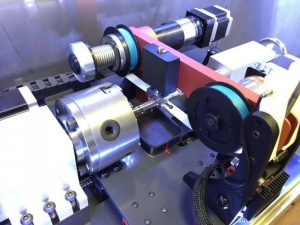 Majority of the test samples for assessing fatigue limits of materials fall in to one of cylindrical or rectangular strip geometry. These samples are generally machined or stamped out of stock materials which may be a plate, sheet, bar, rod or laminates.
Majority of the test samples for assessing fatigue limits of materials fall in to one of cylindrical or rectangular strip geometry. These samples are generally machined or stamped out of stock materials which may be a plate, sheet, bar, rod or laminates.
Most fatigue testing of materials, unless specified, require smooth surfaces. Preliminary machining, including initial stock removal and finish milling or grinding should be stress free, since residual stresses will influence the fatigue limits. These surfaces are prepared as part of specimen preparation after machining by grinding and polishing to the required finish. Typically, the final finish should be 8-12 micro inches of roughness. At TTL, we have capability to machine, grind and polish fatigue samples for testing. See above a longitudinal polishing machine used for production of metallic specimens.
Capability – Most Fatigue testing is done in a standard single or double action testing frame. Specially designed test frames are used for multi axial fatigue. At touchstone testing laboratory, we have several standard test frames with load capabilities ranging from few Newtons up to 500 Kilonewtons with automated data gathering, monitoring, and reporting to run standard load or displacement controlled fatigue tests. In addition, we have capabilities to run fatigue crack growth resistance tests. Test frequencies can be varied from 1-100Hz. Environmental cells are available for sub ambient testing conditions with temperature capabilities from -200C to 1000C with neutral or corrosive atmospheres. We have capability to extract samples including machining, polishing, and run fatigue testing of metallic, polymeric, ceramic and fiber reinforced composite panels.
At TTL, we conduct fatigue testing of metallic, polymeric, ceramic and composite materials routinely to support engineering and design of original equipment. In addition, we have capability to evaluate the fatigue performance of engineered structures. If nonstandard test frames are required for fatigue testing due to geometric constraints, we have capability to design and engineer custom test frames to test components and structures. Customers we support frequently are from aerospace, automotive, power generation, oil & gas, mining and medical implant industries.
Most commonly used standards for fatigue testing of materials:
- ASTM C1360 – Standard practice for constant amplitude axial, tension – tension cyclicfatigue of continuous fiber reinforced advanced ceramics at room temperature
- ASTM C1361 – Standard practice for constant amplitude axial, tension – tension cyclicfatigue of advanced ceramics at room temperature
- ASTM D3479 – Tension -Tension testing of fatigue of polymer matrix composites
- ASTM D7774 – Standard test methods for flexural properties of plastics
- ASTM D7791 – Standard test methods for uniaxial fatigue properties of polymers
- ASTM E461 – Standard Practice for Conducting Force Controlled Constant Amplitude Axial Fatigue Tests of Metallic Materials
- ASTM E606 – Standard Test Method for Strain-Controlled Fatigue Testing
- ASTM E647 – Standard test method for measurement of fatigue crack growth rates
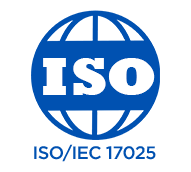
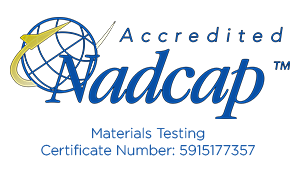
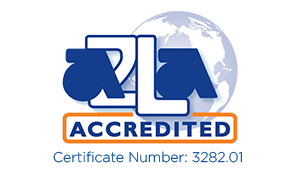
Touchstone is committed to providing its customers with quality, reliable test results. That is why we have undertaken the rigorous steps needed to meet and secure the most stringent of test lab accreditations including ISO/IEC 17025, NADCAP 7101 (Materials Test Lab) and NADCAP 7122-I (Non-Metallics Materials Testing).
© 2024, Touchstone Testing Labs | Design by Wheelhouse Creative

